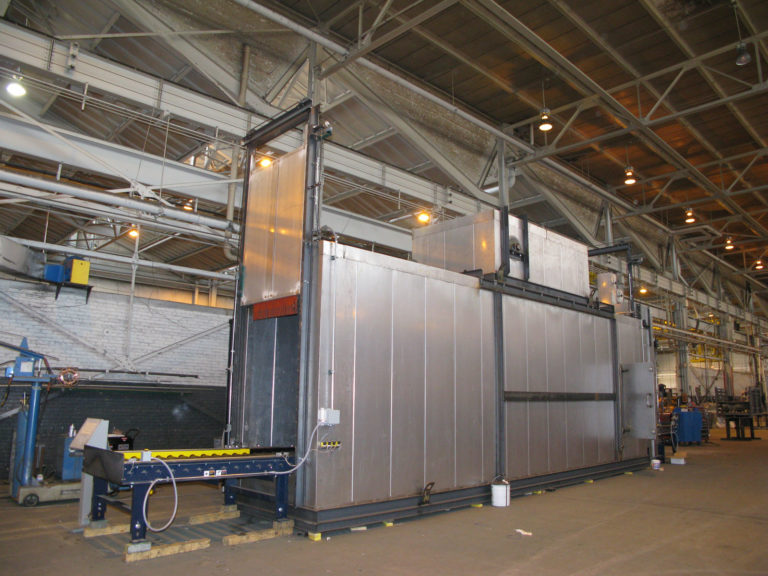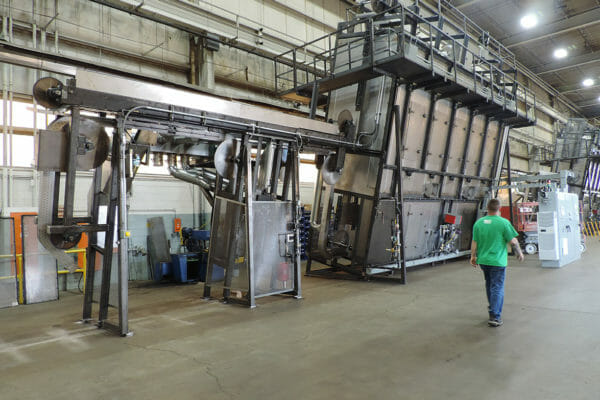Conveyor Ovens, in the simplest terms, are batch ovens that operate with product moving through it.
Conveyor Ovens can utilize indexing or continuous motion, with horizontal, vertical, inclined, or spiral motion paths. Conveyor styles include powered roller, belted (various types/materials), chain-on-edge (COE), overhead, or power and free.
By comparison, a batch oven only allows for product to be placed in a static position for thermal processing. Depending on how the oven is used, product may be positioned consistently and uniformly inside of the chamber, or more often fairly randomly. While a batch oven can be more of a “one-size-fits-all” solution, it can produce varied results (within and between batches). Depending on the customer process, this may be perfectly acceptable.
Because conveyor ovens incorporate motion, inherently they are a more expensive solution than a batch oven, however there are a number of reasons to consider using a conveyor oven:
- High Production Volumes
If a customer has enough product volume, at some point a batch oven may no longer be a viable solution for them. There may not be enough time to load, heat up, cool down (if required), and unload the amount of product that must be processed in a given time.
- Production Automation
A conveyor oven can often easily be incorporated into a production line, eliminating or minimizing human intervention with the equipment. This can in turn, lead to a more consistent product or product placement with fewer variances/defects.
- Process Flexibility
Oven conveyor drive systems can be fit with a variable frequency drive (VFD) in order to change the speed of the conveyor. This can be useful in changing the residence time of product in a heated zone/s. Additionally, a change in the oven (temperature) set point, combined with that of a third parameter, e.g. air velocity, can completely alter a temperature profile.
Conveyor ovens can be zoned based on a required temperature profile — up to a zone for every profile segment. Further, a customer process may often dictate that their product must be cooled. With a conveyorized system, product can be moved to or through a designated cooling zone. Conversely, in a batch oven process, heating and cooling will generally occur within the same zone. Energy is expended not only in cooling the product, but also in cooling the internal components of the oven which in turn has to be reheated for the next batch process.
Conveyor Oven uses/applications include:
- Drying
- Baking
- Curing (adhesive, coatings, etc)
- Heat Treating
- Pre-Heating
- Bonding
- Annealing
- Stress Relieving
- Tempering
- Aging



